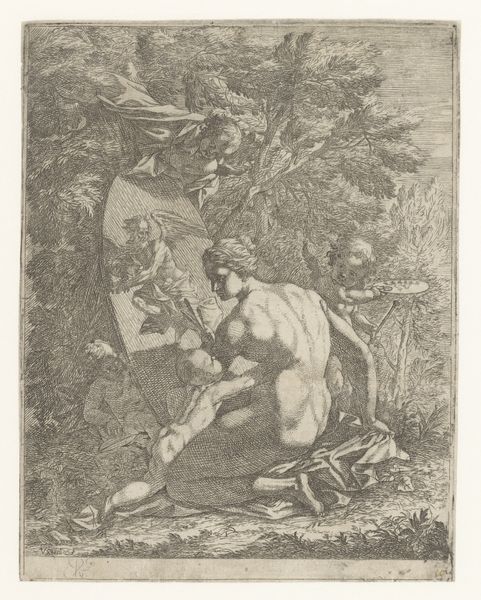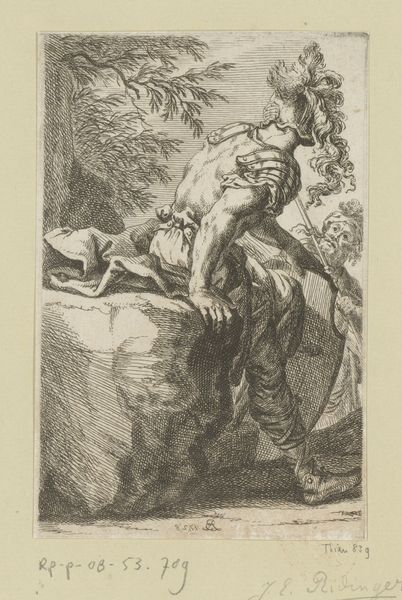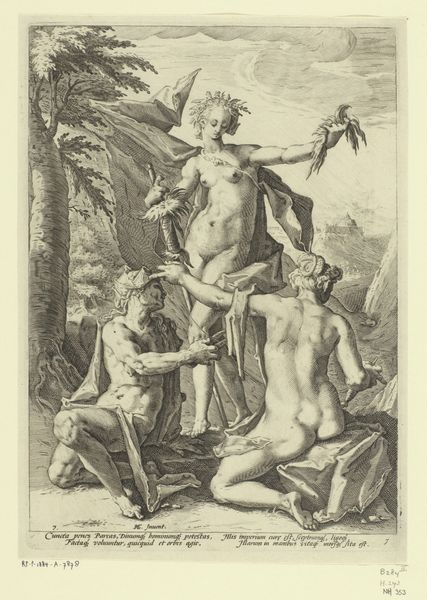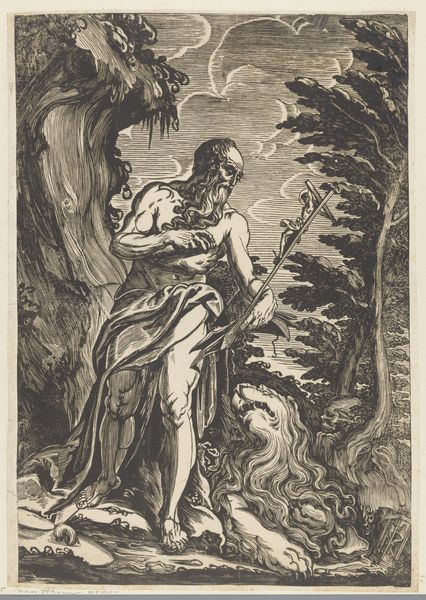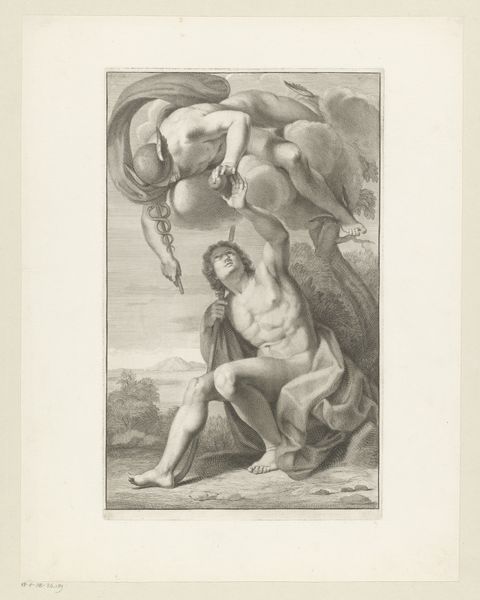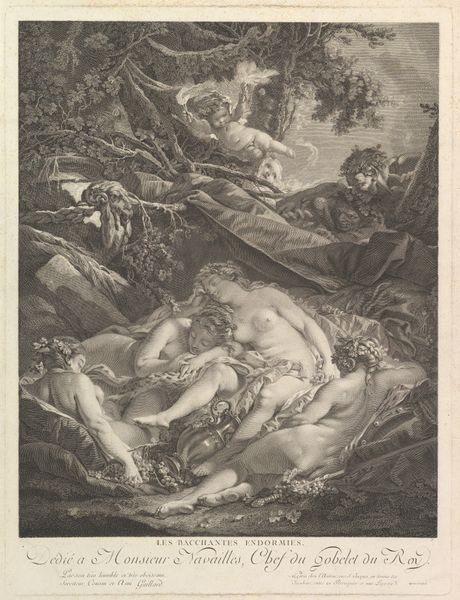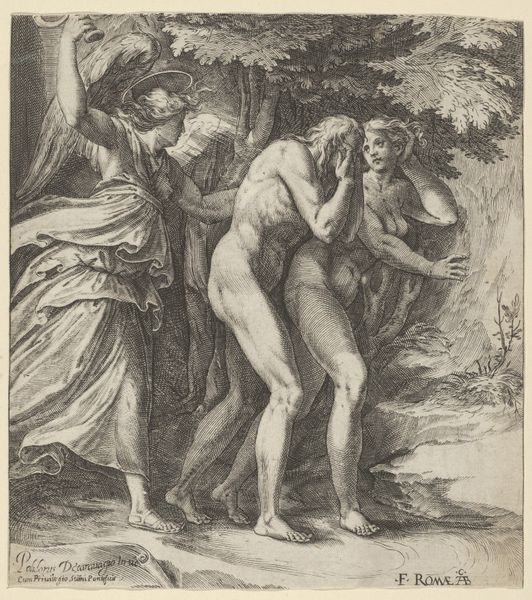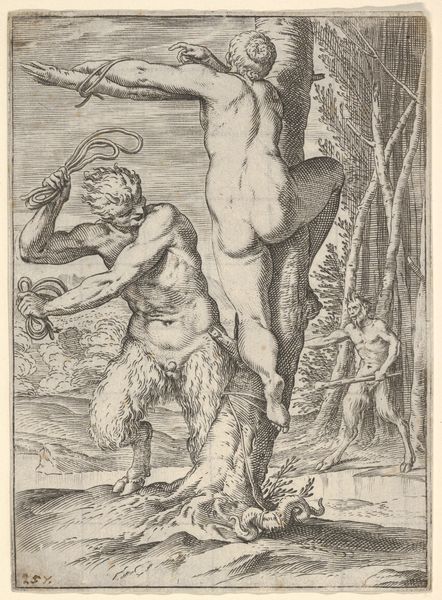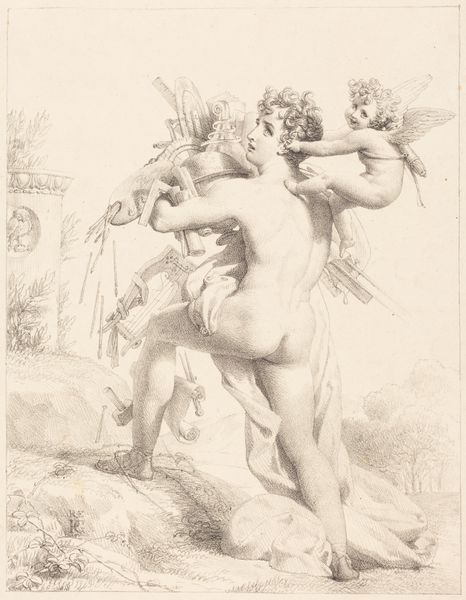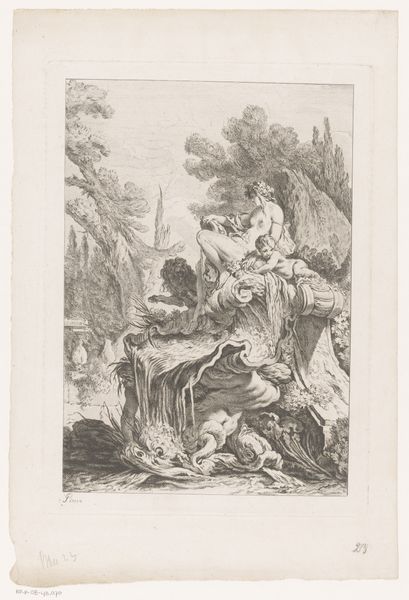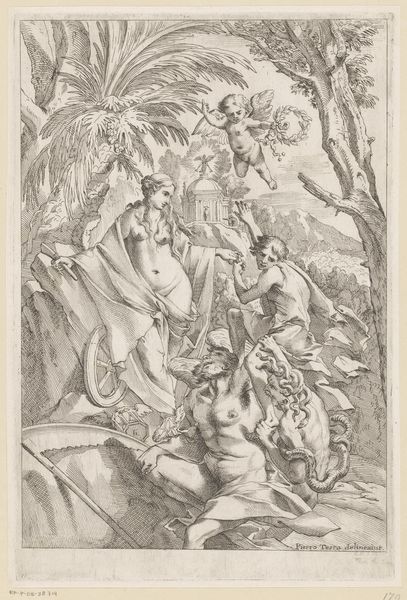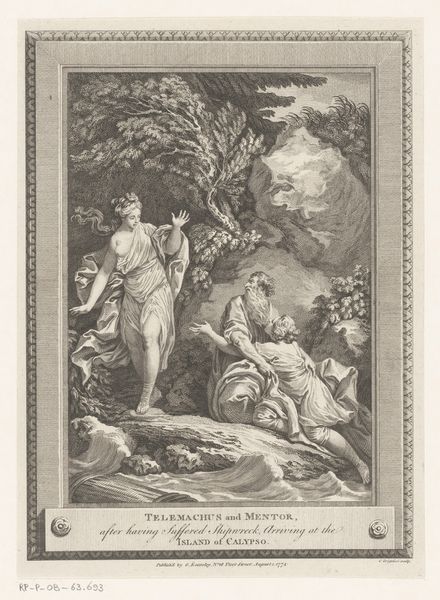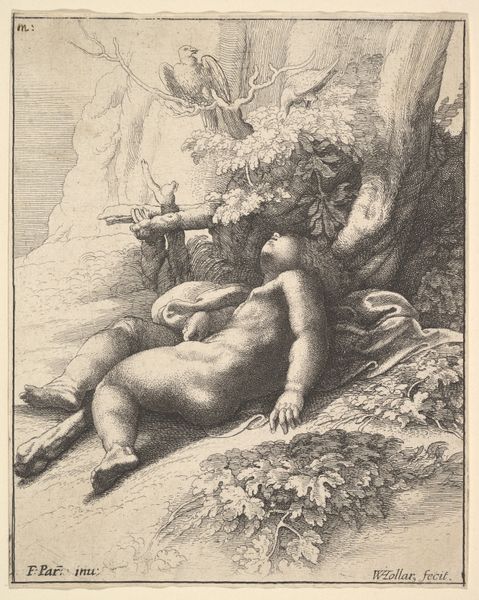
print, engraving
#
allegory
#
baroque
#
dutch-golden-age
# print
#
landscape
#
figuration
#
history-painting
#
nude
#
engraving
Dimensions: height 270 mm, width 193 mm
Copyright: Rijks Museum: Open Domain
Curator: This engraving, titled "Perseus and Andromeda," was created during the Dutch Golden Age. The piece, realized between 1595 and 1679, is attributed to Willem van Swanenburg. It presents a striking allegorical scene. Editor: My first reaction is... discomfort. Andromeda is chained and naked, posed vulnerably. The landscape feels menacing, the sea churns, and the tension is palpable. Curator: Absolutely. Swanenburg depicts a pivotal moment from the Greek myth. Andromeda, punished for her mother's hubris, is offered as sacrifice to a sea monster. Perseus, as the heroic rescuer, arrives just in time, his sword raised to slay the beast. It's a potent combination of history painting and classical themes viewed through the lens of baroque style. Editor: And that lens is really important here. How is the power dynamic represented, particularly regarding gender and race, shaped by the prevailing societal norms of that era? Is Andromeda’s passivity enforced through her nudity and chaining, furthering a patriarchal narrative? The lack of racial diversity and the depiction of her vulnerability within this heroic context is disturbing, because who defines her worth and autonomy. Curator: It raises many of those uncomfortable yet necessary questions. The nude female figure, of course, was a popular subject in art history, often representing virtue or beauty, but this one…I cannot ignore that context shapes how we see. Andromeda isn't necessarily empowered. This also gets into considering how ideas about classical virtue were evolving in Dutch society, even as colonialism was creating other exploitative dynamics. Editor: Exactly. It’s vital we examine how this scene—a supposed heroic rescue—potentially reflects and reinforces power structures inherent in 17th-century society. How art often serves as propaganda for those in charge is a conversation worth having, not just a beautiful scene but what does it mean? Curator: Ultimately, contemplating art necessitates that dialogue – seeing its potential both for celebrating beauty and solidifying potentially problematic ideologies. Editor: Art that doesn’t ask tough questions is really art at all? A print that serves now as reminder that liberation often means understanding how even "heroic" narratives can mask oppression.
Comments
No comments
Be the first to comment and join the conversation on the ultimate creative platform.
